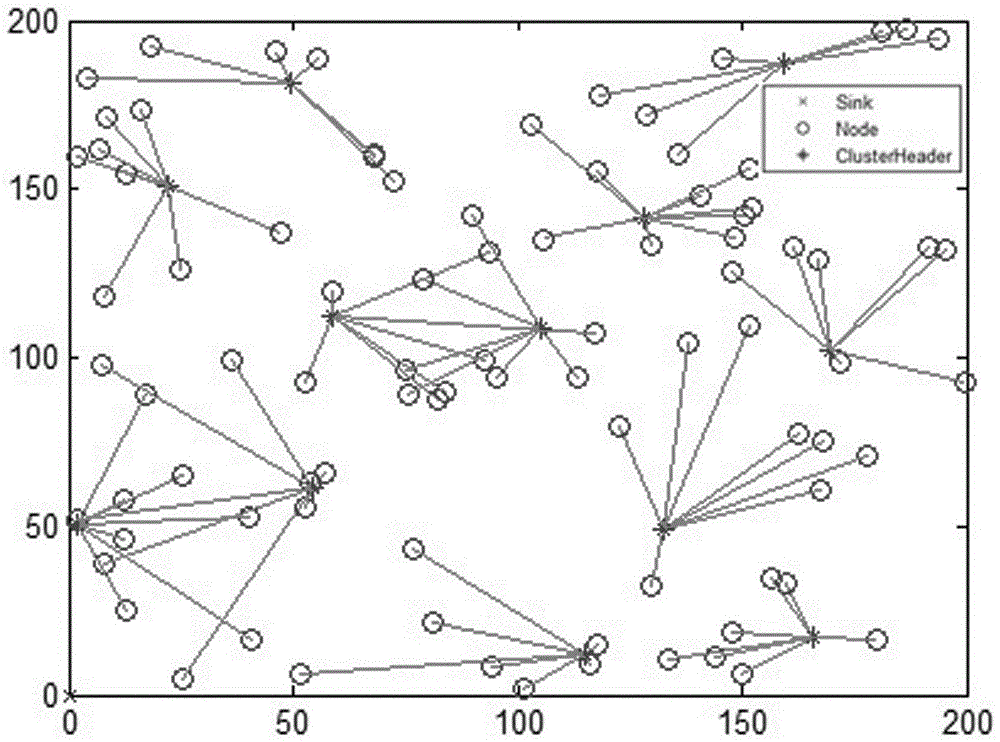Multi-level heterogeneous wireless sensor network clustering routing method based on K-means clustering and ant colony optimization
A k-means clustering and wireless sensor technology, applied in network topology, wireless communication, advanced technology, etc., can solve the problems of limited energy consumption, high energy consumption of the network, and uneven distribution of cluster domains, etc., to prolong the survival time , the effect of improving the efficiency of use
- Summary
- Abstract
- Description
- Claims
- Application Information
AI Technical Summary
Problems solved by technology
Method used
Image
Examples
Embodiment Construction
[0043] The present invention will be described in further detail below with reference to the accompanying drawings and embodiments.
[0044] The multi-level heterogeneous wireless sensor network clustering routing protocol based on K-means clustering and ant colony algorithm proposed by the present invention adopts the same network model as the DEEC protocol, and the operation process of the protocol is divided into three stages: the creation of the cluster domain, Inter-cluster routing selection and data transfer.
[0045] 1. Multi-level heterogeneous network model construction
[0046] Assuming that N sensor nodes with different initial energies are evenly deployed in a square area with side length M, the sensor nodes collect data periodically and have the following properties:
[0047] (1) The sensor nodes in the network each have a unique identification number (ID), and the nodes cannot be moved;
[0048] (2) The location of the base station is fixed, the energy is not lim...
PUM
 Login to View More
Login to View More Abstract
Description
Claims
Application Information
 Login to View More
Login to View More - R&D
- Intellectual Property
- Life Sciences
- Materials
- Tech Scout
- Unparalleled Data Quality
- Higher Quality Content
- 60% Fewer Hallucinations
Browse by: Latest US Patents, China's latest patents, Technical Efficacy Thesaurus, Application Domain, Technology Topic, Popular Technical Reports.
© 2025 PatSnap. All rights reserved.Legal|Privacy policy|Modern Slavery Act Transparency Statement|Sitemap|About US| Contact US: help@patsnap.com



